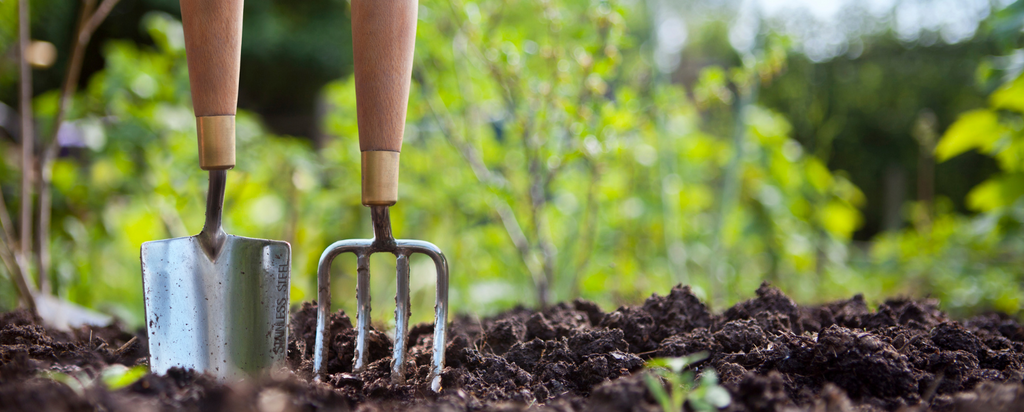June is a very important month for garden maintenance and soil conditioning. This guide will help you keep your garden vibrant and healthy during the colder months, with some advice on best care for plants that have ceased growing and need to ‘rest’ in the winter.

General Garden Maintenance
- Weeding and Mulching: Weeds can seed and grow prolifically in autumn, time to remove them and apply a thick layer of mulch around the garden. That limits them returning over winter and insulates plant roots during the cold season.
- Tool Maintenance: Clean and sharpen secateurs, loppers and pruning saws to make cuts during pruning.
- Pruning: Prune deciduous trees and shrubs while they are dormant. Remove any dead, diseased, or damaged branches. With ornamental trees and shrubs, the leafless branches help you decide the shape you want to achieve.
Protecting Plants from Frost
- Frost Shelters: Protect young citrus, tamarillo, and passionfruit plants with frost shelters. Use frost cloth or newspaper as a cheap and easy option on cold nights.
- Liquid Frost Protection Oil: Spray on susceptible plants to provide a protective coating. This is most effective when sprayed at the beginning of the winter season.
The Vegetable Patch
For premium results, always plant new vegetable seedlings with our Premium Garden Mix
-
Planting:
- Strawberries: Plant new strawberry plants or snip runners with roots from existing plants. As plants that thrive on food use our new Biofert Mussel Meal Powder around the plants This product is packed with plenty of goodies that will help deliver lots of summer berries.
- Asparagus: Plant crowns about 50cm apart in soil that has been dug over with organic compost.
- Garlic and Shallots: Place garlic cloves 10cm apart and 5cm deep with the root side down and the pointed end up.
-
Winter Vegetables:
- Rainbow Stemmed Chard and Beetroot: For eye-catching colour and nutritious additions to winter salads.
- Broad Beans: Stake or build supports as they grow. Pinch out tips for use in stir-fries.
- Other Vegetables: Plant cabbages, cauliflowers, broccoli, spinach, silverbeet, and winter lettuce varieties.
- Frost Protection: Cover young citrus, tamarillo, and passionfruit vines in frosty areas.
The Fruit Garden
- Planting: June/July are the best months to plant new fruit trees. Ensure they are in sunny, well-drained locations. Plant with compost and sheep pellets and stake well.
- Pruning: Prune deciduous fruit trees like apples, pears, and peaches.
- Feeding and Mulching: Apply compost or well-rotted manure around the base of fruit trees and mulch to retain moisture and protect roots and limit competing weeds.
- Order New Fruit Trees: Where space is limited dwarf varieties, column shaped trees and single trees grafted with multiple varieties are good value.

The Flower Garden
- Winter Flowers: Flowering annuals like pansies, violas, and primulas and calendulas add pops of colour as the garden becomes dull in winter.
- Spring Flowering Bulbs: Time to get the tulips, daffodils, and hyacinths into the soil, or plant in pots. Pots can be left in light shade until they strike.
- Scented Shrubs: Plant daphne, wintersweet, boronias, and Burkwood viburnums for fragrance.
- Colourful Shrubs: Azaleas, camellias, early flowering rhododendrons, witch-hazel, winter jasmine, and mahonias provide winter colour.
- Summer Flowering Perennials: Remove dead foliage from the previous season. Divide and replant hostas, heleniums and daylilies.
- Winter Roses (Hellebores): Plant in raised beds or on banks where the beautiful nodding flowerheads can be appreciated.

Lawn Care
- Mowing: Keep the grass a bit longer to protect roots from frost.
- Fertilising: Use a quick release fertiliser such as Prolawn All-Purpose if the lawn needs a boost.
- Need to sow a lawn in winter?: Not the ideal time, but we recommend Prolawn Classic Rye lawn seed as the most cold hardy for germination.
- Aeration: Aerate lawns if compacted and apply Gypsum.
- Porina Caterpillar Control: If bare patches are appearing in the lawn, monitor and control these pests.

Indoor Plants
- Light and Watering: Ensure sufficient light and reduce watering as plants grow more slowly in winter. Yellowing foliage is generally a sign of too much water.
- Humidity: Increase humidity around indoor plants by grouping them together or using a humidifier.
Miscellaneous Garden Tips
- Composting: After adding kitchen scraps and garden waste to your compost bin, place a layer of soil on top to help break it down and turn it regularly.
- Did you know?: You can empty the contents of your vacuum cleaner into the compost bin, to add variety to the brew!
- Pest Control: Watch for winter pests like slugs and snails. Use traps or pellets.
- Watering Systems: While not in use, check irrigation system risers are not submerged by soil - they may become blocked.
Gardening & Landscaping Projects for June
- Investing in a Healthy Garden: Condition your garden by adding compost and sheep pellets to improve soil structure and fertility. For heavy clay soils, add gypsum.
- Mud Control: Use JakMat Geocell Ground Stabilisation Mats to create stable, mud-free areas for driveways and paths. Get 15% JakMat Geocell Ground Stabilisation Mats until the end of June 2025!
- Build a raised garden bed: Check out our guide on How to Build a Raised Garden Bed.
- Manage water pooling on your property: check out our handy article on 5 Ways To Divert Water on how to avoid bogs forming in your yard this winter.
- How to Install a field drain: Check out our blog on How to Install a Field Drain.
By following these gardening tips and tasks, you can ensure that your garden remains healthy and beautiful throughout the winter months. Happy gardening!



